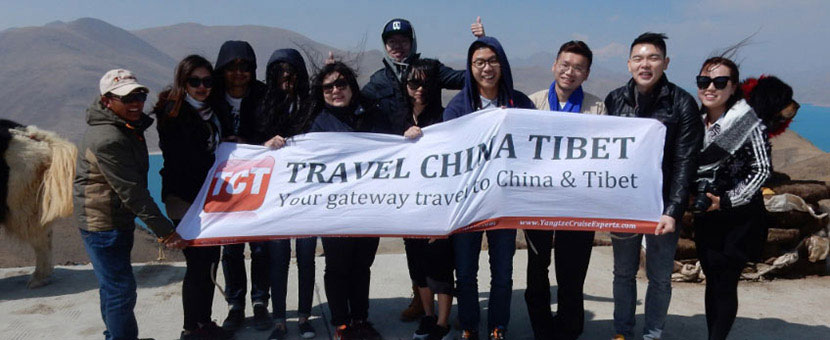How to get there:
Located at the south end of the small Tibetan Old Town and to the north of the newer Chinese quarter, Gyantse Dzong can't be missed. Stairs are accessible from the east side of Dzong off Yingxiong Nan Lu. It takes about 20 minutes to climb to the top.Perched on a massive rocky crag looming above Gyantse's Old Town, the 14th century citadel of Gyantse Dzong stands as a bittersweet reminder of Tibet's wrenching passage into the modern world.
It also affords a dramatic view of the Old Town and the temple complex of Pelkor Chöde Monastery and the multi-tiered Gyantse Kumbum rising within its walls in addition to windows on several of the most dramatic—and tragic—periods in Tibetan history.
Gyantse Dzong: A citadel of Tibetan heroes
In a key sense, it was at Gyantse Dzong that this remote region was forceably pushed into the flow of global geopolitics.
The shove came in the form of Sir Francis Younghusband and his 1,000-strong contingent of British Expeditionary troops, supported by around 9,000 sherpas and porters, which entered Tibet despite the 13th Dalai Lama's clear request that the British mind their own business and leave Tibet alone.
The problem, of course, was that the British, eager to create a buffer between British India and the expanding Russian Empire, saw Tibet very much as their business. Tibet was pulled, most unwillingly, into the "Great Game," in which European Imperial powers (and, later, the Japanese) competed for dominance in Central Asia.
And so Younghusband and crew crossed into Tibet from India in December of 1903 in response to the 13th Dalai Lama's outright refusals to accept British diplomatic and trade missions (while, however, having hosted a Russian representative in Lhasa for nearly a year).
Outgunned
Younghusband's experienced soldiers were armed with the latest in European arms. Tibet's loosely organized army, on the other hand, was largely made up of poorly trained farmers armed with badly obsolete matchlock muskets—if, indeed, they had guns at all.
Furthermore, the Dalai Lama's political power was attenuated by the presence in Lhasa of the Qing Dynasty amban, a representative of Beijing who oversaw a garrison of 2,000 troops in Lhasa. Empowered to make wide-ranging political and military decisions, the amban wished to meet Younghusband, but in a show of independence on the part of the Dalai Lama, was forbidden to travel to do so, ratcheting up regional diplomatic tension.
The results were, sadly, predictable enough. After marching 50 some miles into Tibet from India's Sikkim province, Younghusband's force was met by 3,000 Tibetan troops in Guru Pass. After a parlay with the Tibetan general, something—no one is quite sure what—caused the British force to open fire.
The Tibetans could hardly respond: Under their leader's orders, they had extinguished the fuses on their antique matchlock muskets. Taking heavy fire and unable to shoot back, the Tibetans retreated, losing up to 800 of their number to withering British fire that included rounds from Maxim machine guns. The battle was soon over, and the British advance resumed.
The Battle of Gyantse
The British took Gyantse on April 12, 1904, finding very little resistance. They left Gyantse Dzong empty, preferring to set up camp outside of town—a choice that allowed Tibetan forces to regroup and, after laying seige to the British camp on May 5, reoccupy Gyantse Dzong and the nearby Tsechen Monastery and Dzong.
In the following weeks, British reinforcements arrived and the definitive battle of the British-Tibetan war unfolded. Despite their heroic resistance, the Tibetan defenders could not hold out against modern British artillery, and on June 28, Tsechen fell, with a final assault taking Gyantse Dzong on July 5.
And with that, the road to Lhasa was clear; the Dalai Lama fled and on July 14, Younghusband's forces seized the Tibetan capital.
Gyantse Dzong: Grounds for competing historical perspectives
As with so much of contemporary Tibet, Gyantse Dzong is, at least in a symbolic sense, grounds for controversy. The fortress lay half ruined after the British assault, which used cannons to breach its thick walls, and suffered further damage in 1967 during the Cultural Revolution, when Red Guards actually dynamited parts of the structure in their fervor to erase the past and eliminate all ideological rivals to radical Maoism.
As a potent symbol of Tibetan resistance to dominance by outside powers, Gyantse Dzong's symbolism is carefully managed by today's cultural officials. The Anti-British Imperialists Museum housed within the complex is the primary means of attempted message-control.
Claiming that the Tibetans who fought the British in 1904 were, in effect, defending China, the museum plays fast and loose with numbers and facts, existing primarily to drive home the tenet that "Tibet is an inalienable part of the Motherland" rather than an independent entity of any kind.
As for what Tibetans themselves might think, it's probably best to simply to spend time looking out over the Old Town toward Pelkor Chode, imagining thousands of Tibetan men so willing to defend Tibet that they were willing to sacrifice their lives against insurmountable odds.
And the British? They're now welcome, provided they bring the proper visa, Tibet travel permit and plenty of renminbi.










